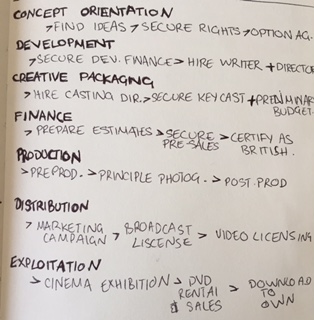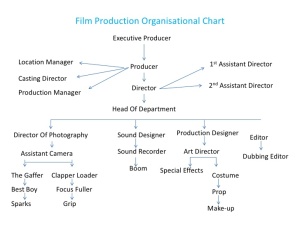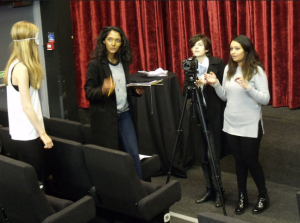How to structure a review:
We met with film reviewer Sonia Zadursan, who is a film reviewer for CineView and Birds Eye View, and she gave us a short lesson on how to write an effective film review. Here is her advice:
Introductory Paragraph
(This is where you introduce the film and intrigue the readers)
- The director and their previous work
- If the film has any awards or credibility
- The production company of the film if it is well known
Brief Synopsis
- Small summary of the film without giving away too much of the plot.
Content
(Engage the readers by releasing interesting aspects of the plots, without giving away big spoilers)
- Positive aspect of the production and give an example or photo.
- Negative of the film if you think their is one.
- Positive of the film if you can think of another one.
Ending
- Then wrap up the the review with a conclusion of how the overall experience was.
Here is an example of a Sonia Zadursan review:
http://birds-eye-view.co.uk/2014/08/18/obvious-child-review/
Here is an example of a review with a similar structure to this:
http://www.telegraph.co.uk/culture/film/film-news/9839322/Paperman-is-the-best-thing-Disney-has-done-in-years.html
Some helpful templates:
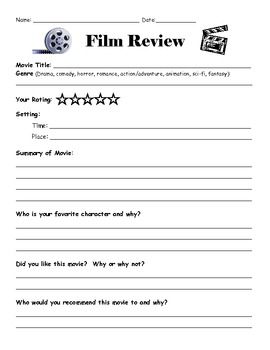
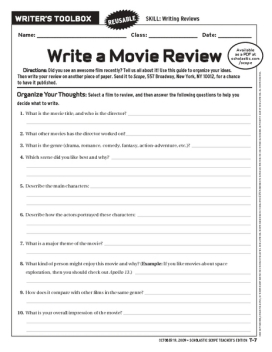
Gasman Review:
The BAFTA award winning short film Gasman is one of the older films by director Lynne Ramsay, who is most credible for feature film, ‘We need to talk about Kevin’. This realist drama is something different members of the audience will interpret differently as everyone can relate to it in their own sense.
The film is packed with symbolisation and metaphors, which really give the production its notability. She delves into the life of working class families in truly a painful way. She explores many themes within this topic, such as unfaithfulness and deprivation, as metaphors. These are shown in a certain light to make you feel uneasy.
The main plot is about an unfaithful man who can longer gather the strength to keep hiding his secret from his children. However, the plot contains many cruxes, which allowed me to create my own meanings, this gave me a more personal experience. Every viewer will read into these gaps differently. The film seems so vague and appears to be simple on its first impression but is actually really weighty and meaningful.
The opening consists of shots from a lower level suggesting that the story will be told through the point of view of the children. Also the faces of the characters are not shown until later on, which foreshadows the hidden secrets that will be revealed. This instantly grabbed my attention and made me start to question from the get go.
Towards the middle of the film, the slow pace made me hope for something dramatic to happen soon. The main character is the young girl whose life was turned upside down after discovering her fathers secret. Ramsay spent a significant chunk of the film showing the audience the situation through her eyes. Which made me feel sympathy for her more. So I later appreciated that the slow pace of the film added to the heart wrenching drama. Also, after finishing the film I found myself questioning the characters and my personal life, which I thought was far more impactful than ‘entertaining’ films.
One of the more thought-provoking aspects of the film, is its use of lighting and colours. It is dull and it adds to the gloominess of the story as well as representing the harsh reality for some underprivileged Glaswegians. The house at the beginning is somewhat lighter compared to the rest of the film, which shows that some moments in the characters lives were somewhat peaceful. However straight after they leave the house, the colour never comes back. This could also indicate the main character’s downward spiraling emotional state as the last shot of the film is her standing at a railway fully consumed by the fog, which symbolizes the feeling of being overwhelmed.
I definitely would recommend this film to lovers of art-house and symbolic films, as it is one of the best short films I have seen in a long time, especially in this very specific genre.
Romeo and Juliet Review
Baz Luhrmann’s phantasmagoric on screen adaptation of the classic tale of Romeo and Juliet was the most successful of the hundreds of Shakespeare adaptations, snatching up 5 BAFTA Awards including the award for Best Direction. The success of the film also relied on the faultless casting, Romeo played by heartthrob of the time Leonardo DiCaprio and Juliet played by the very talented Claire Danes.
The story kicks off with exposing the feud between the Capulets and the Montagues who are two feuding gang families. Keeping true to the classic tale, Juliet’s family tries to force her to marry a wealthy man, Paris (Paul Rudd), however she ends up falling for rival gangs Romeo Montague when they lock eyes at a ball. Despite finding out their love is forbidden, they go to extreme lengths to be with one another.
Luhrmann’s vision is showcased via the vibrant colours, costumes and sound score. He is known to have very contemporary musical taste for his films but the soundtrack in this film especially is just phenomenal (winning the BAFTA Award for Best Film Music). Filmed in extremely sunny locations, including Mexico City, Miami and San Francisco the natural sunlight gives the film the vibe of the original location intended by Shakespeare, Verona, Italy. The vivacious colours are a reference back to the Renaissance artists, when the original play was actually written, as the colour scheme and the interpretations behind those colours are similar to that of the film. This energetic look gives the film an edge over the other adaptions, as they are less visually dramatic, this is because most performances during the Shakespearian era did not have the resources to make productions as aesthetically pleasing as they envisioned. Thus this film seems more true to the original play, despite giving it a modern twist.
The difference between the Montague boys and Capulet Boys are evident. Their outfits show the clear divide as the Capulet boys wear mostly black and dark suits where as all the Montague boys wear bright and colourful Hawaiian T shirts, except Romeo. Romeo never wears them willingly, however sometimes some of the other boys put it on him. This symbolises that he does not want to be a part of the feud with the Capulet’s, but his family forces him too. Juliet also wears the opposite colour to the Capulet boys. Throughout the film she wears white to show her innocence and how against the feud she is. This directive decision is to foretell the change of heart, even before Romeo and Juliet meet. The film is packed with these little details, which can be noticed when watched again.
The cinematography of the film heavily influences the audiences reactions towards the characters since the film relies on pathetic fallacy to showcase the emotions of the characters. Despite having many unrealistic weather changes, it added immensely to the melodrama. For example, when the conflict scene between Tybalt (John Leguizamo) and Mercutio (Harrold Perrineau) commenced, the sun was shining, however that quickly and dramatically changed into a thunderstorm to show the intensity of the situation and foreshadow how much it will affect Romeo and Juliet.
I would definitely watch this film again and recommend everyone to as well. Baz Lurhman’s film version of Romeo and Juliet is perfect for the modern day audiences that do not mind giving into unrealistic and melodramatic worlds.
Felix Et Meira
I was given the opportunity to attend the Jewish Film Festival to see this film. Directed by Maxime Giroux, Felix Et Meira pleasantly surprised me. The film has similar themes to Romeo and Juliet as it is about star-crossed lovers. Lovers that just cannot be together and try their best to make it work.
The story revolves around Meira a youthful Hasidic lady who struggles to be herself due to her husband and her societal beliefs. She falls in love with Felix, a middle-aged atheist with no societal constraints. Their love revolves around the differences of their two worlds and we follow their story as Meira tries to cut ties with her husband who is limiting her potential and happiness. The slow paced and detailed film connects to the audience as they are found to be drawn into Meira’s life and her situation. The arthouse film lacks any other form of media expect some short dialogue and light music, but that adds to the authenticity of the film and the characters feelings.
One of my favourite aspects of the film was the small things between Meira and her husband that made it seem like real life. Giroux looked at the details carefully to make it seem as much like real life as he could. Meira would drop on the floor and pretend to be dead when her husband refused her of anything and despite it being small and silly, it added to the naturalism of the film.
The film was honest and did not rely on any extra glam or pizzaz to make it compelling to watch. It was a realistic version of all the hollywood blockbusters about forbidden love. This is why it drew me to it so much. The honesty behind the script as well as the way it was filmed. It was like watching an observational documentary.
